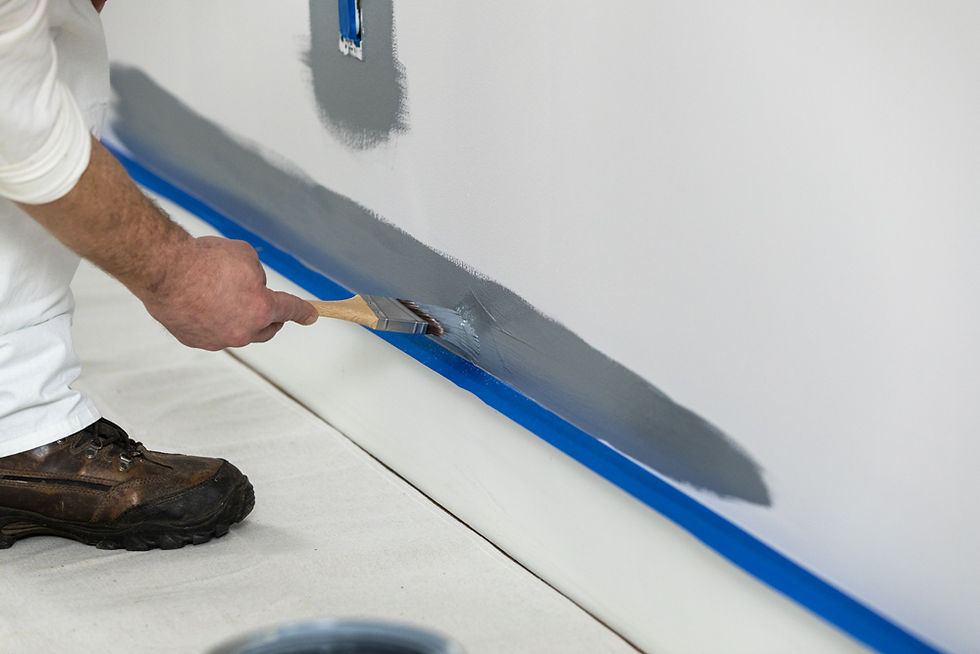Deck-Staining Mistakes to Avoid
- Matt Weber

- Jan 18, 2024
- 3 min read
(guest post by By Sjoerd Bos)

Between the BBQ, the patio furniture and family get-togethers, decks handle more traffic than any other wood surface around our homes. The deck is the centerpiece of an outdoor entertainment space, but it’s easy to make mistakes that can keep decks from standing up to the summer sun, weather and foot traffic.
The experts at Sansin, a wood-protection company that focuses on eco-friendly solutions, offers these Mistakes To Avoid to ensure wooden decks are properly designed and protected.
• Not considering design impact. Excessive moisture is much more problematic for a deck than UV exposure. Wetting causes the wood to swell and then shrink while drying. From this natural expansion and retraction, little cracks will form as the wood cycles through these extreme conditions. This can cause the wood to discolor and the coatings to wear prematurely. Consider designing landscape, sprinklers and roof drainage to avoid excessive wetting on the deck. This can help reduce these extremes and extend maintenance cycles.
• Choosing a coating that sits on top of the wood. Where some film-forming deck coatings may easily peel or flake, water-borne finishes penetrate the wood tissue, protecting the wood from deep within. Penetrating stain/sealers repel water, while at the same time allowing the wood to “breathe” naturally and not trap moisture.
• Applying product at the wrong time of day. It is recommended to apply the deck preservative in the morning, out of direct sunlight. A deck that is exposed to sun or has been in the sun all day will be too warm. This can cause the product to dry too quickly on the surface before adequate penetration into the wood grain.

It’s easier to put on a maintenance coat than redo a deck.
• Not properly prepping the wood surface. Preparation is key to a successful deck project. Here are the steps to follow. First, apply a biodegradable deck cleaner to remove buildup, mold and mildew. Rinse with a hose, and let it dry thoroughly. Next, use an orbital sander with 60-80 grit paper to create a level, consistently porous surface. This will ensure the wood will accept the right amount of product. Now, apply the coating using a garden sprayer and back-brush any puddles of product, but let the product soak into the wood. Allow the first coat to dry completely before applying subsequent coats.
• Not being proactive about maintenance. “Early bird gets the worm” is an appropriate saying for decks. Doing deck maintenance before visible wear and tear leads to a much easier and enjoyable experience. Be sure to inspect the surface carefully from time to time and look for even the smallest signs that maintenance is needed. It’s easier to put a maintenance coat on than redo a deck. Pro tip: A simple water bead test will indicate if it’s time for maintenance. Apply a few drops of water to the wood decking. If it beads on the
surface, the deck is protected. If the water soaks into the wood, it’s time for restoration.

• Assuming your deck will wear evenly. A deck may have a high traffic area that leads from the back door to a pool or a much-used lawn area. Alternatively, you may have a couple of areas that get sprayed by sprinklers or design issues such as downspouts or a clogged gutter can cause water to pummel parts of the deck during rainstorms.
In the case of uneven wear, putting a maintenance coat over the entire surface may not work to address specific, more acute wear issues. Instead, you may need to treat specific spots by sanding them and applying a first coat of preservative directly to the bare wood. In the case of excessive wear, you might need to redo entire boards by sanding them down to bare wood and then refinishing them with a first coat before applying a second maintenance coat.
To learn more, go to Sansin.com.




AV在线看 AV在线看;
自拍流出 自拍流出;
国产视频 国产视频;
日本无码 日本无码;
动漫肉番 动漫肉番;
吃瓜专区 吃瓜专区;
SM调教 SM调教;
ASMR ASMR;
国产探花 国产探花;
强奸乱伦 强奸乱伦;